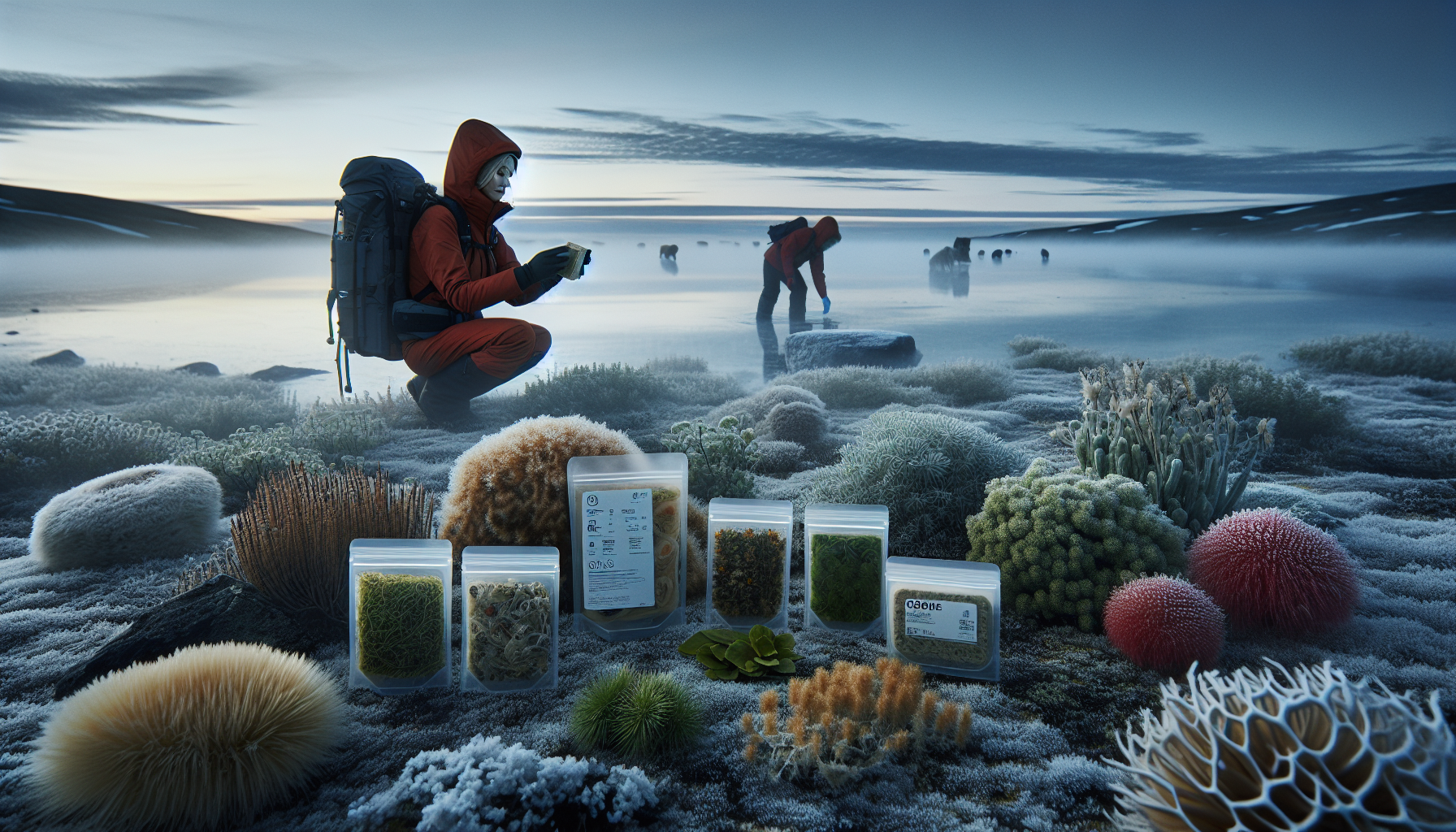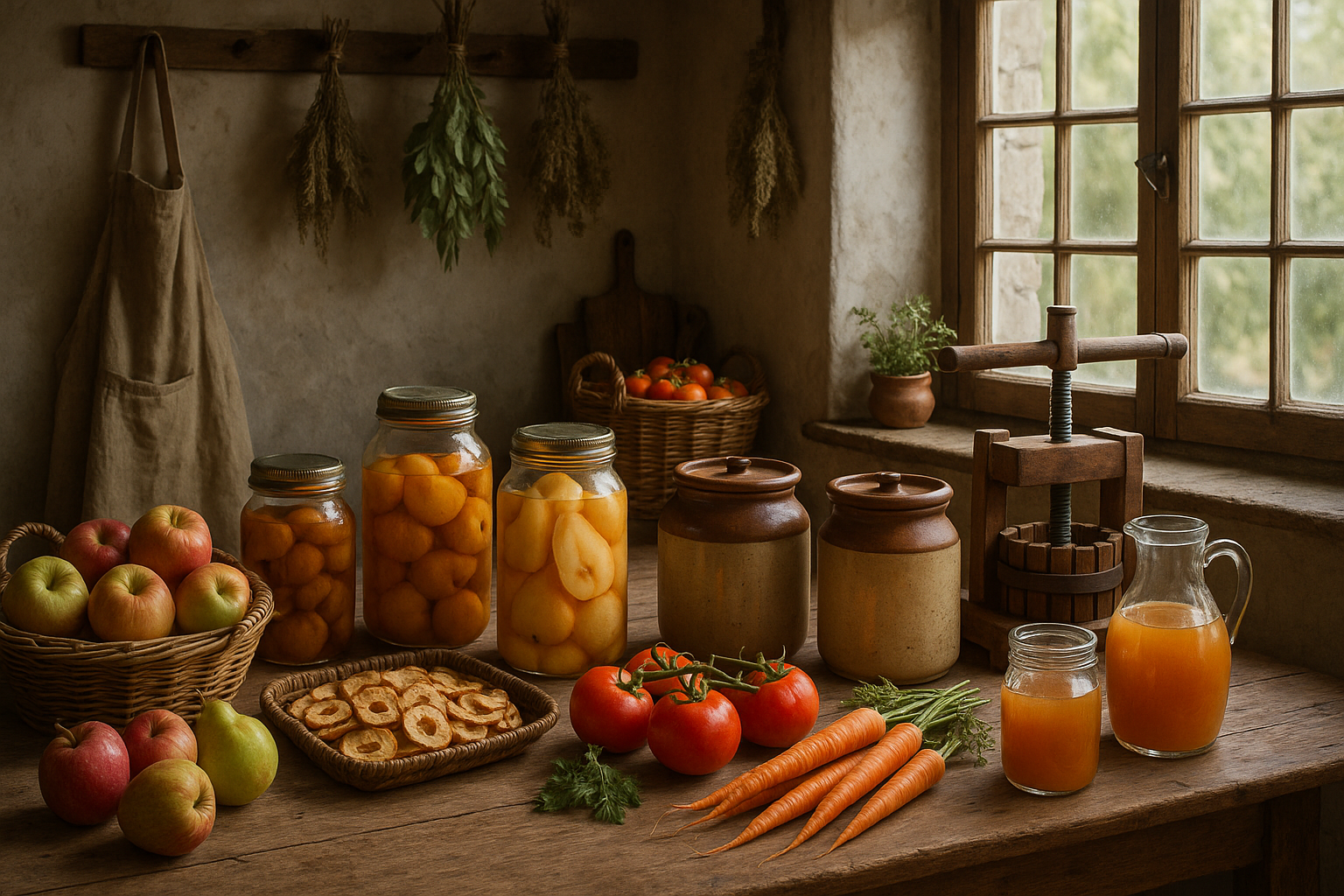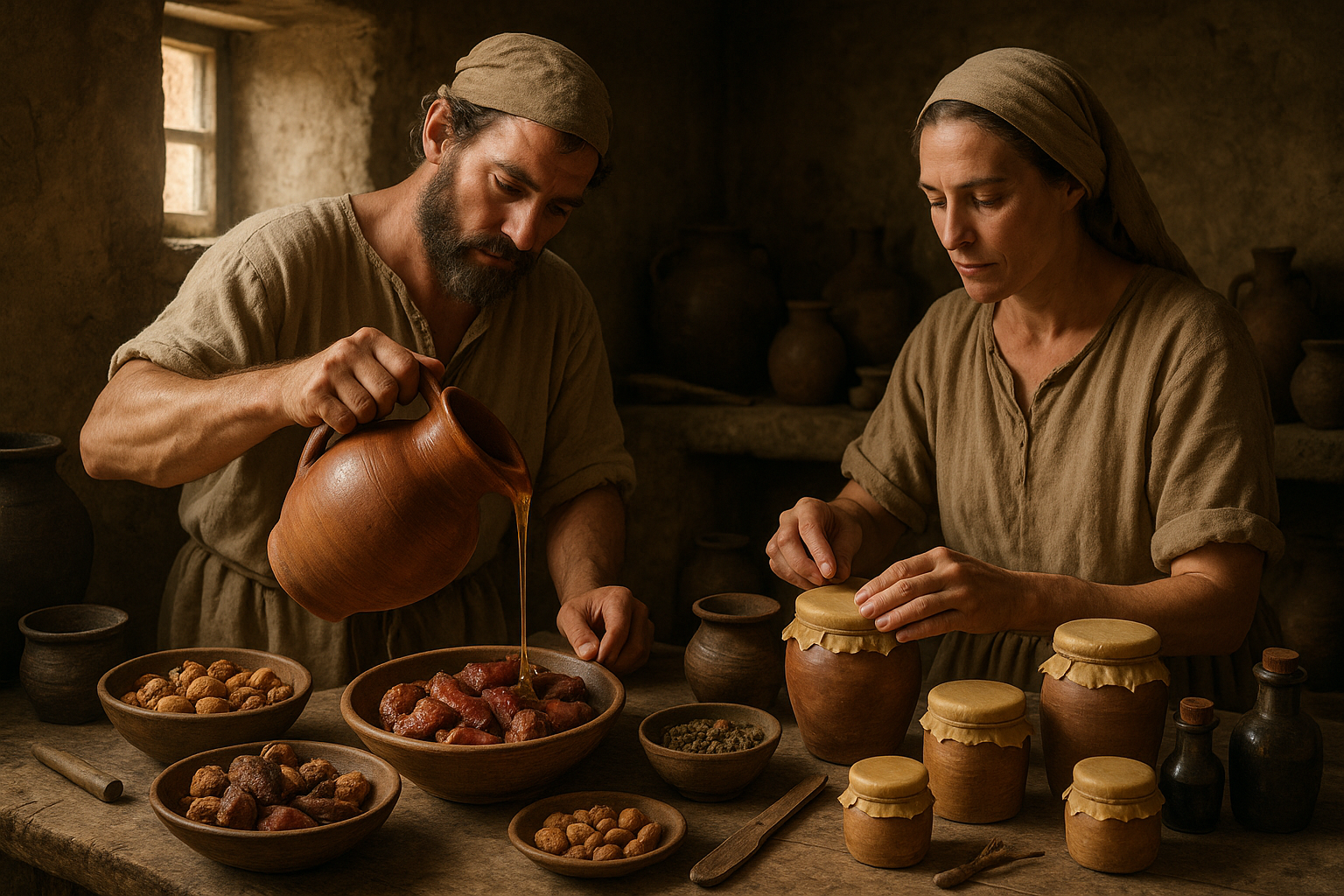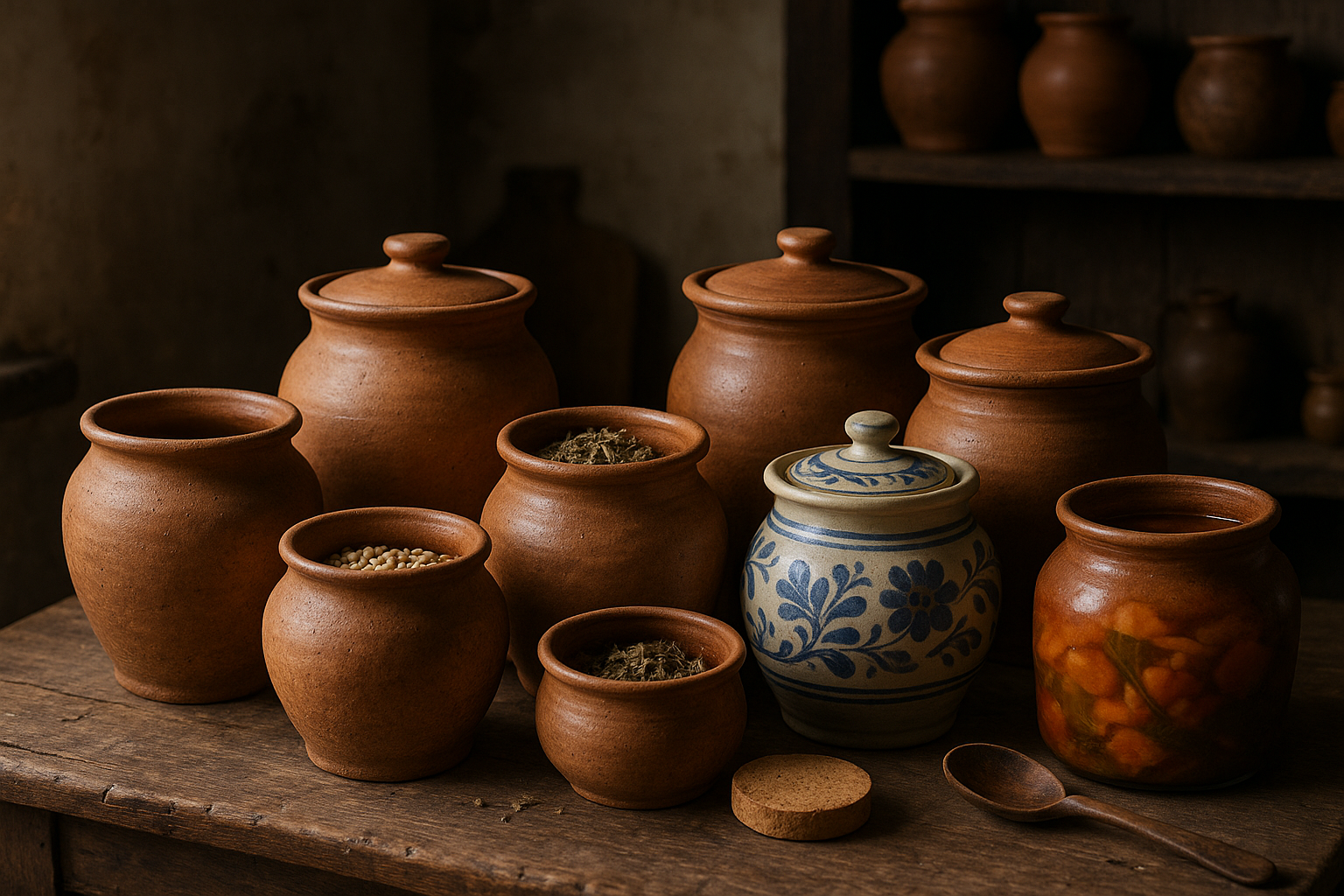In the vast, icy expanses of the tundra, where temperatures often dip well below freezing and the ground remains perpetually frosted, life thrives against all odds. 🌿 This seemingly inhospitable environment is home to a myriad of resilient plant species that have adapted in remarkable ways to survive the harshest of conditions. But what if these hardy tundra plants could offer more than just a testament to nature’s ingenuity? What if they held the key to revolutionizing one of the most ubiquitous, yet environmentally problematic aspects of modern life: packaging? Welcome to the intriguing world of tundra plants and their potential to transform the way we think about eco-friendly packaging solutions.
As global awareness of environmental issues continues to rise, the quest for sustainable alternatives in all sectors has intensified. One area that has garnered particular attention is packaging, a necessity in today’s consumer-driven world but one that contributes significantly to pollution and waste. Traditional packaging materials, such as plastics and non-biodegradable composites, are increasingly seen as unsustainable. The need for innovative, eco-friendly solutions has never been more pressing, and this is where the humble tundra plants enter the scene. From their natural antifreeze properties to their potential as biodegradable materials, these plants could play a pivotal role in creating packaging that is not only functional and durable but also kind to our planet.
In this article, we will explore the fascinating characteristics of tundra plants that make them ideal candidates for sustainable packaging. We’ll delve into the unique adaptations that allow them to thrive in extreme conditions and how these can be harnessed for industrial use. Additionally, we will discuss ongoing research and case studies that highlight the practical applications and benefits of using tundra-derived materials. From reducing our carbon footprint to enhancing the life cycle of packaging products, the potential impact is significant. Join us as we unravel the frosty freshness of tundra plants and discover how they might just be the green packaging revolution we’ve been waiting for. 🌎
The Untapped Potential of Tundra Plants
The icy expanses of the tundra, a biome characterized by its cold climate, limited vegetation, and short growing seasons, have long been overlooked as a source of innovation. Yet, nestled within these harsh environments are hardy plants with unique properties that can be harnessed for sustainable and eco-friendly solutions. These plants, having adapted to survive in the extreme conditions of the tundra, hold untapped potential for use in various industries, particularly in packaging. As the world shifts towards more sustainable practices, exploring alternative materials derived from nature becomes increasingly important.
Tundra plants like mosses, lichens, and certain shrubs have developed exceptional qualities that allow them to thrive in sub-zero temperatures and nutrient-poor soils. These adaptations not only ensure their survival but also offer insights into creating environmentally friendly packaging solutions. For instance, certain mosses have remarkable water retention abilities and insulating properties, making them ideal candidates for packaging materials that need to keep contents fresh without the need for synthetic chemicals.
Ecological Benefits of Tundra Plant-Based Packaging
The adoption of tundra plant-based packaging solutions offers numerous ecological benefits. Firstly, utilizing these plants reduces the demand for conventional packaging materials such as plastics, which are notorious for their detrimental impact on ecosystems. Traditional packaging contributes to pollution, landfill waste, and the depletion of fossil fuels, whereas biodegradable alternatives derived from tundra plants can significantly mitigate these issues.
Moreover, the cultivation and harvesting of tundra plants for packaging purposes can be done sustainably, ensuring minimal impact on the native ecosystems. This approach supports biodiversity and helps maintain the ecological balance in tundra regions. By leveraging the natural properties of these plants, we can create packaging that not only serves its purpose effectively but also decomposes without leaving harmful residues in the environment.
| Property | Traditional Packaging | Tundra Plant-Based Packaging |
|---|---|---|
| Decomposition Time | Up to 500 years | 1-2 years |
| Environmental Impact | High, due to non-biodegradability | Low, biodegradable |
| Resource Requirement | High (fossil fuels, water) | Moderate (renewable resources) |
As we explore these comparisons, it becomes evident that switching to tundra plant-based packaging is not just a viable alternative but a necessary step towards a more sustainable future. By opting for these materials, businesses can significantly lower their carbon footprint and contribute to the preservation of natural habitats.
Innovative Approaches to Harnessing Tundra Plants
The journey to integrating tundra plants into mainstream packaging involves innovative approaches that span from agricultural practices to technological advancements. Understanding how these plants can be cultivated and processed is crucial in ensuring their feasibility as a large-scale packaging solution. Agricultural innovation plays a pivotal role in this process, as traditional farming methods may not be directly applicable to tundra plants.
One promising approach is the development of controlled environment agriculture (CEA) systems tailored to simulate the tundra’s unique conditions. This allows for the growth of tundra plants in regions outside their natural habitat, enabling year-round cultivation and harvesting. CEA systems provide the perfect balance of temperature, humidity, and nutrients required for optimal growth, ensuring a steady supply of raw materials for packaging production.
Additionally, technological advancements in material science are key to unlocking the full potential of tundra plants. Researchers are exploring ways to enhance the properties of these plants, such as increasing their structural strength or modifying their texture, to make them suitable for various packaging applications. By manipulating the cellular structure of these plants, scientists can create composites that retain the desired qualities of tundra plants while improving their performance as packaging materials.
Case Studies and Success Stories
Several companies and research institutions have already begun exploring the use of tundra plants for packaging, setting the stage for wider adoption of these sustainable materials. For example, a Canadian startup has successfully developed a packaging prototype using lichen-based composites, demonstrating the feasibility and benefits of tundra plant-based materials. This innovative packaging not only meets industry standards but also offers superior insulation and moisture resistance.
Another inspiring case comes from a Scandinavian research group that has leveraged the water retention capabilities of tundra mosses to create a packaging solution for fresh produce. This packaging keeps fruits and vegetables fresh for extended periods without the need for refrigeration, significantly reducing energy consumption and food waste.
These case studies highlight the potential for tundra plant-based packaging to revolutionize the industry. By providing real-world examples of success, they inspire further research and investment into this promising field. If you are curious to see these innovations in action, watch this video: Tundra Packaging Innovations – Eco Solutions Channel.
Challenges and Considerations
Despite the promising potential of tundra plant-based packaging, several challenges need to be addressed before it can become a mainstream solution. One major hurdle is the scalability of production. While tundra plants can be grown in controlled environments, replicating the specific conditions required for optimal growth on a large scale poses significant logistical and economic challenges.
Moreover, the cost of producing packaging materials from tundra plants currently remains higher than traditional alternatives. This cost disparity is mainly due to the need for specialized cultivation techniques and processing methods. However, as research and technology advance, it is expected that production costs will decrease, making these eco-friendly solutions more accessible to businesses and consumers.
Another consideration is the potential impact on local ecosystems. Although the cultivation of tundra plants can be done sustainably, it is essential to ensure that harvesting does not disrupt the delicate balance of tundra ecosystems. Implementing stringent regulations and conservation measures is crucial to safeguarding these habitats while benefiting from their resources.
Future Directions and Opportunities
The exploration of tundra plants for eco-friendly packaging is still in its nascent stages, offering numerous opportunities for future research and development. As scientists continue to study these unique plants, there is potential to discover even more species with valuable properties for packaging applications.
Collaborations between industry and academia can accelerate innovation and drive the development of new materials and technologies. By working together, stakeholders can overcome current challenges and pave the way for tundra plant-based packaging to become a staple in sustainable practices worldwide.
In conclusion, the potential of tundra plants as a source of eco-friendly packaging solutions is vast and largely untapped. As the world seeks sustainable alternatives to traditional materials, these hardy plants offer a promising path forward. By continuing to invest in research and development, we can unlock the full potential of the tundra’s natural resources and contribute to a more sustainable future. For a deeper understanding, explore the innovative approaches discussed in this article, and consider how you can contribute to this eco-friendly revolution.

Conclusion
In an age where environmental concerns are at the forefront of global discourse, the exploration of sustainable packaging solutions is more crucial than ever. The article “Frosty Freshness: Harnessing the Power of Tundra Plants for Eco-Friendly Packing Solutions” delved into the innovative potential of utilizing tundra plants as a key component in developing sustainable packaging materials. Let’s recapitulate the main points discussed, highlight the significance of this groundbreaking approach, and inspire further action and engagement from you, our valued reader.
The exploration began with a deep dive into the unique characteristics of tundra plants. These hardy species have adapted to some of the most extreme climates on Earth, boasting resilience and versatility that make them ideal candidates for sustainable applications. From their ability to thrive in nutrient-poor soils to their natural antifungal and antibacterial properties, tundra plants offer a treasure trove of benefits waiting to be harnessed.
The article proceeded to examine the environmental impact of current packaging solutions. Traditional packaging materials, particularly plastics, contribute significantly to pollution and environmental degradation. As these materials often take hundreds of years to decompose, they present an urgent challenge to sustainability efforts worldwide. Here, tundra plants present an eco-friendly alternative. By leveraging their natural properties, we can develop packaging that is not only biodegradable but also offers enhanced preservation qualities for perishable goods.
Moreover, the article highlighted the economic benefits of adopting tundra plant-based packaging. As consumers become increasingly eco-conscious, there is a growing demand for sustainable products. Businesses that align with these values by incorporating eco-friendly packaging solutions can enjoy a competitive edge, enhance their brand image, and contribute positively to the environment. The potential for tundra plant-based packaging to reduce waste and lower carbon footprints also translates to long-term savings and efficiencies for companies across industries.
One of the most exciting aspects of this approach is its scalability and adaptability. Tundra plants are found across various regions, making them accessible resources for research and development. With advancements in biotechnology and sustainable farming practices, it is possible to cultivate these plants on a larger scale, ensuring a steady supply for packaging production. This scalability can lead to widespread adoption, further driving down costs and increasing availability.
As we consider the significance of these findings, it’s clear that the integration of tundra plants into packaging solutions is not just a trend but a necessary evolution in our approach to sustainability. The power of these plants to reduce environmental impact while providing practical and economic benefits is undeniable. By embracing such innovative solutions, we take a crucial step towards a more sustainable and environmentally responsible future.
We encourage you to reflect on the potential impact of these eco-friendly packing solutions in your personal and professional life. Consider how you might incorporate sustainable practices into your everyday choices, and how businesses you support can also play a role in this movement. By sharing this knowledge with others, you can contribute to raising awareness and driving change on a larger scale. 🌍
We invite you to join the conversation. Share your thoughts and insights in the comments below. Have you come across other innovative sustainable solutions that inspire you? How do you see the future of packaging evolving in response to environmental challenges? Your engagement helps build a community committed to sustainability and innovation.
Furthermore, if you find this topic as inspiring as we do, please share this article with your network. By spreading awareness, we collectively amplify the importance of sustainable practices and contribute to a greener planet.
To dive deeper into the fascinating world of sustainable packaging, explore these additional resources:
–
–
–
In conclusion, the journey towards eco-friendly packaging solutions is a shared responsibility. By embracing the potential of tundra plants and other sustainable materials, we contribute to a healthier planet and a brighter future. Let’s harness this power, inspire action, and make a lasting difference. Thank you for being part of this crucial conversation. 🌱





